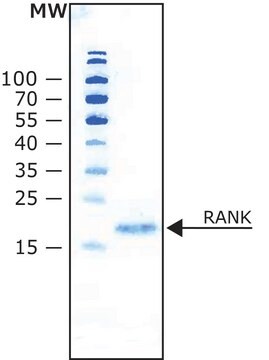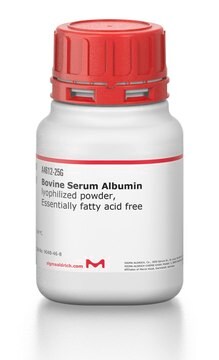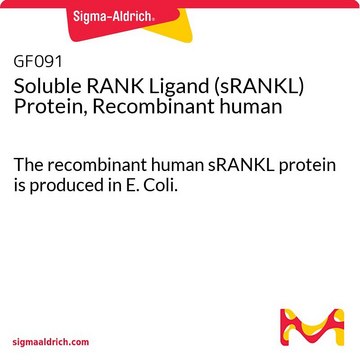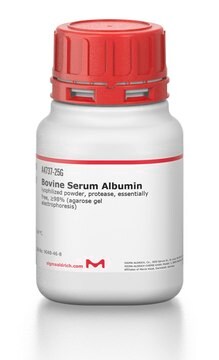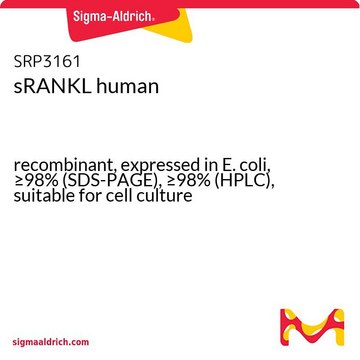T3573
RANK Ligand/TRANCE human
>90% (SDS-PAGE), recombinant, expressed in NSO cells, lyophilized powder
Sinônimo(s):
Osteoclast Differentiation Factor (ODF), Osteoprotegerin Ligand (OPGL), Receptor Activator of NF-KB Ligand (RANKL), TNF-related activation-induced cytokines (TRANCE)
About This Item
Produtos recomendados
fonte biológica
human
Nível de qualidade
recombinante
expressed in NSO cells
Ensaio
>90% (SDS-PAGE)
forma
lyophilized powder
potência
1.5-7.5 ng/mL ED50
peso molecular
glycolysylated recombinant product ~35 kDa by SDS-PAGE
calculated mol wt 23 kDa
embalagem
pkg of 10 μg
condição de armazenamento
avoid repeated freeze/thaw cycles
Impurezas
endotoxin, tested
nº de adesão UniProt
aplicação(ões)
cell analysis
temperatura de armazenamento
−20°C
Informações sobre genes
human ... TNFSF11(8600)
Descrição geral
Aplicação
Ações bioquímicas/fisiológicas
forma física
Nota de análise
Código de classe de armazenamento
11 - Combustible Solids
Classe de risco de água (WGK)
WGK 3
Ponto de fulgor (°F)
Not applicable
Ponto de fulgor (°C)
Not applicable
Equipamento de proteção individual
Eyeshields, Gloves, type N95 (US)
Certificados de análise (COA)
Busque Certificados de análise (COA) digitando o Número do Lote do produto. Os números de lote e remessa podem ser encontrados no rótulo de um produto após a palavra “Lot” ou “Batch”.
Já possui este produto?
Encontre a documentação dos produtos que você adquiriu recentemente na biblioteca de documentos.
Nossa equipe de cientistas tem experiência em todas as áreas de pesquisa, incluindo Life Sciences, ciência de materiais, síntese química, cromatografia, química analítica e muitas outras.
Entre em contato com a assistência técnica